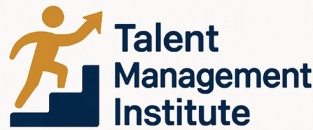
Understanding the Need for Remote Employee Monitoring
Recognizing the Critical Need for Vigilant Oversight
The landscape of remote work has transformed dramatically, propelling companies to adapt quickly to ensure both productivity and data security. Monitoring remote employees has become a crucial element in safeguarding sensitive data and preventing data breaches. As organizations embrace remote working, understanding why employee monitoring is necessary becomes essential to protect data while supporting productivity. In remote work environments, employees may use personal devices, which increases security risks. Without proper oversight, these devices can become potential gateways for unauthorized access to company data, leading to severe data loss. Remote employees often handle sensitive data, and thus, the line between efficiency and data protection must be carefully balanced. Organizations must implement strategies for consistent monitoring to effectively mitigate threats. Real-time employee monitoring not only helps in safeguarding sensitive information from leaking but also boosts productivity. However, maintaining employee privacy while ensuring data security presents a unique challenge for many companies. Security teams are tasked with creating robust monitoring policies that address these challenges head-on. As this ongoing shift to remote work continues, crafting policies that balance privacy and security is imperative. Otherwise, companies risk compromising both employee trust and data protection. Thus, as remote work becomes the norm, mastering the oversight of remote employees is no longer a choice but a necessity. To learn more about the strategies that can enhance team dynamics and improve data security, consider embracing continuous learning initiatives.Balancing Privacy and Security
Finding the Right Balance
The proliferation of remote work has necessitated a careful balancing act between privacy and security. As companies encourage remote employees to use personal devices for work, the risk to sensitive data escalates. It's vital to monitor remote employees in a way that respects their privacy while still safeguarding sensitive company data.
To navigate these waters, organizations must develop clear policies and guidelines. It is crucial to establish transparent monitoring practices that employees can understand and trust. Communication is key. Keeping employees informed about what their activity monitoring entails goes a long way in maintaining their trust.
Privacy Considerations
Transparency in monitoring ensures that employees maintain an understanding of what is being tracked, such as productivity or real-time data access. Such transparency is fundamental, not just for compliance with data protection regulations but also for fostering a sense of security among employees working remotely. Additionally, organizations should adopt monitoring software that prioritizes anonymity and doesn’t unnecessarily intrude into personal activities beyond work tasks.
Establishing Trust
Integrating privacy principles within remote employee monitoring highlights an organization's commitment to data ethics. Simply put, by showing respect for privacy, companies promote a trust-based work environment. It reinforces that the objectives of monitoring are not to micromanage, but rather to protect the organization against data breaches or data loss. Addressing both privacy and security challenges forms part of a broader risk management strategy that acknowledges the role of security teams in promoting a balance conducive to both organizational security and employee privacy.
Tools and Technologies for Effective Monitoring
Harnessing Tools and Technologies for Optimal Oversight
The rapid shift to remote work has heightened the importance of leveraging tools and technologies to monitor employees effectively while safeguarding sensitive data. Companies must employ advanced monitoring software to maintain high data security standards, ensuring that remote employees' productivity and work efficiency remain intact.
Monitoring software can track employee activity in various ways, offering insights into how employees are utilizing their time and ensuring they adhere to company policies. Implementing these technologies can help identify potential security risks before they lead to data breaches. Real-time monitoring of remote employees is crucial for a company to access productivity metrics and prevent unauthorized access to sensitive data.
Security teams play a vital role by utilizing these technologies to monitor remote employees, thereby reducing the risk of data loss and breaches. They must also ensure data protection by surveilling personal devices used for remote work, which can pose additional security risks.
However, companies must strike a balance between monitoring employees and upholding privacy standards. By integrating appropriate employee monitoring practices, organizations can navigate challenges in remote work effectively, maintaining an ecosystem where data security is prioritized without compromising employee privacy.
For organizations seeking to understand how monitoring remote employees aligns with broader talent management strategies, exploring the complexities associated with various employee types can offer further insights. Companies committed to securing remote work environments can gain valuable perspectives by exploring concepts around complex employee management.
Implementing Data Leak Prevention Strategies
Strategies to Safeguard Sensitive Data
In the era of remote work, ensuring data protection is paramount. With employees working from various locations, often using personal devices, companies must implement robust data leak prevention strategies to mitigate security risks. The challenge lies in balancing effective monitoring with respect for employee privacy.
One of the most effective ways to prevent data breaches is by deploying comprehensive monitoring software. This software allows security teams to monitor remote employees' activities in real time, ensuring that any suspicious behavior is quickly identified and addressed. However, the implementation of such systems must be accompanied by clear policies that outline acceptable use and the extent of monitoring, ensuring transparency and trust.
Leveraging Technology for Data Protection
Advanced monitoring tools can track data access and usage across company devices, helping to prevent unauthorized data transfers. These tools often come with features that alert security teams to potential data leaks, providing an additional layer of security. It's crucial for companies to choose software that aligns with their specific needs, considering factors like the type of sensitive data they handle and the scale of their remote workforce.
In addition to monitoring software, companies should invest in data encryption technologies. Encrypting sensitive data ensures that even if it falls into the wrong hands, it remains unreadable and useless. Implementing strong access controls is another critical measure. By restricting access to sensitive information to only those who need it, companies can significantly reduce the risk of data loss.
Developing a Culture of Security Awareness
While technology plays a crucial role in data protection, fostering a culture of security awareness among employees is equally important. Regular training sessions can help remote workers understand the importance of data security and the role they play in protecting company information. These sessions should cover best practices for handling sensitive data and recognizing potential security threats.
Ultimately, the success of any data leak prevention strategy hinges on a company's ability to integrate these measures seamlessly into its overall talent management framework. By doing so, companies not only protect their data but also enhance productivity and trust among their remote employees.
Addressing Challenges in Remote Employee Tracking
Strategies to Overcome Tracking Hurdles
Tracking the productivity and activity of remote employees presents several challenges that companies need to address proactively to prevent data breaches and enhance data security. When employees work remotely, the physical oversight traditionally exercised in an office environment is lost, creating the need for innovative monitoring solutions. With the correct balance of data protection and monitoring policies, these challenges can be overcome.
One common challenge is the use of personal devices by remote workers. These devices might not always be equipped with the latest security software, increasing the risk of sensitive data loss and security risks. To mitigate this, companies can implement data loss prevention software that allows employees to safely access company data without compromising security. Regular security training can also help remote employees understand the best practices in handling sensitive data securely.
Monitoring remote employees and their work poses another challenge of ensuring productivity without compromising their privacy. The use of real-time employee monitoring software is a solution, but it must be clearly communicated through company policies to ensure employees are aware of the scope and objectives of monitoring activity.
Ensuring seamless coordination between remote employees and security teams is crucial. Establishing clear communication channels and offering regular updates on monitoring results helps to keep everyone informed and aligned with company policies. This will not only enhance productivity but also strengthen data security efforts.
Companies must adapt to these challenges by aligning their employee monitoring strategies with the rapidly changing dynamics of remote work. With effective tools and proactive measures, the risks of data breaches and exposure to security threats can be significantly reduced, allowing businesses to confidently navigate the complexities of remote working environments.
The Role of Talent Management in Remote Work Security
Integrating Talent Management Practices for Enhanced Security
In the realm of remote work, the connection between talent management and data security cannot be overstated. An effective talent management strategy for remote employees incorporates comprehensive monitoring and vigilant data protection measures. By aligning security protocols with employee development and engagement plans, companies can mitigate security risks while promoting seamless remote working experiences.
Firstly, understanding the significance of trust is essential. Remote workers handle sensitive data from disparate locations, often using personal devices. Organizations must adopt clear policies to ensure security without infringing on employee privacy. The introduction of robust employee monitoring systems not only tracks productivity but supports security teams in safeguarding against potential data breaches.
Moreover, continuous training sessions on data protection and security best practices are pivotal. Employees need to be aware of potential data leaks and how their activity can impact real-time security measures. By empowering remote employees with knowledge, organizations minimize risks associated with data loss or unauthorized access.
Additionally, the use of sophisticated monitoring software offers insights into real-time employee activity. However, it’s crucial to strike a balance, ensuring that monitoring does not overshadow the employee’s job satisfaction and productivity levels. Open communication about what monitoring involves and why it is essential aids in maintaining privacy while still safeguarding sensitive data.
Talent management goes beyond mere employee performance and extends to creating an environment of transparency and mutual respect. When employees trust that their company is genuinely invested in a secure yet private work setting, it enhances their work culture, ultimately leading to more effective data protection and company success.






